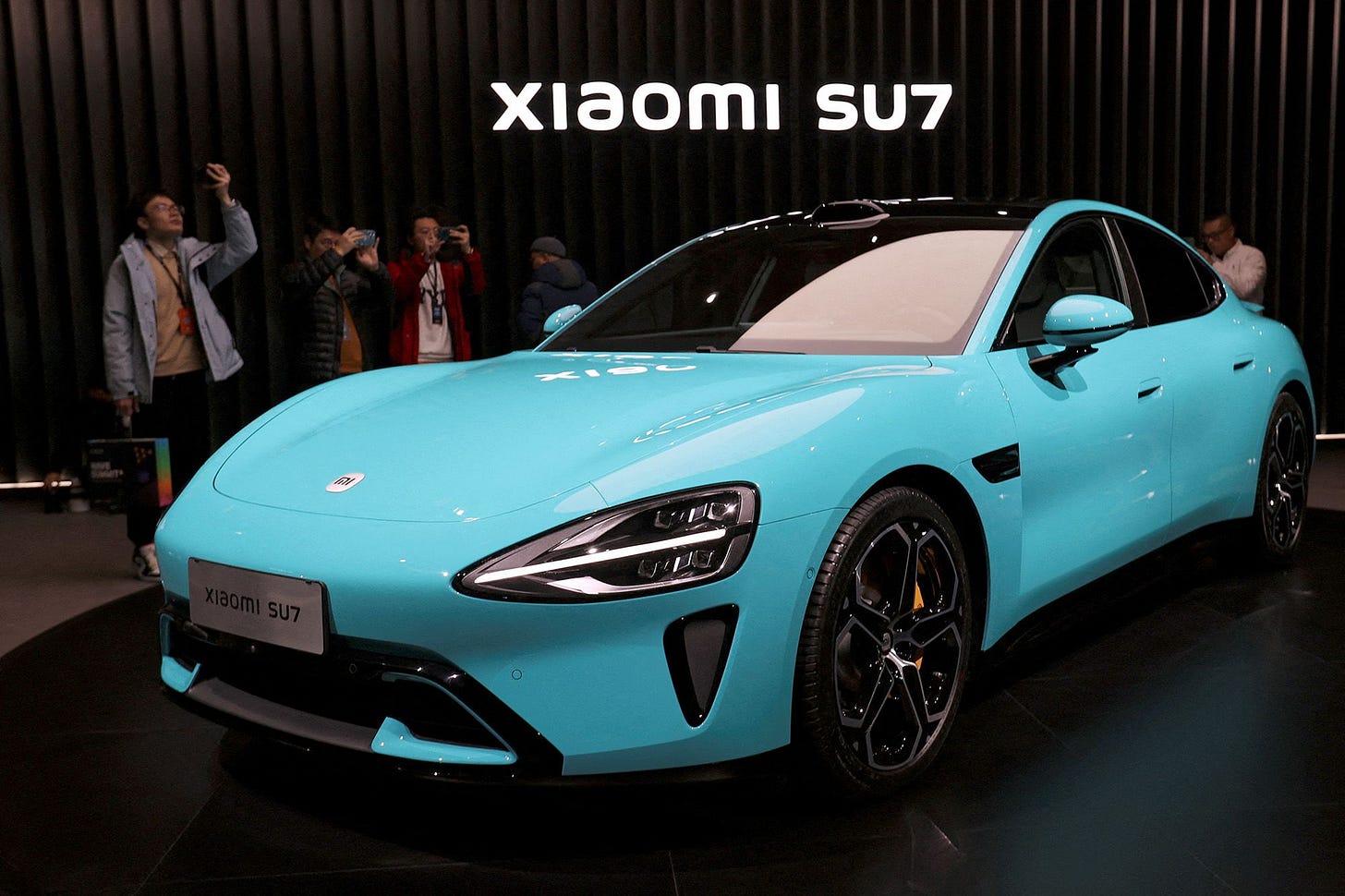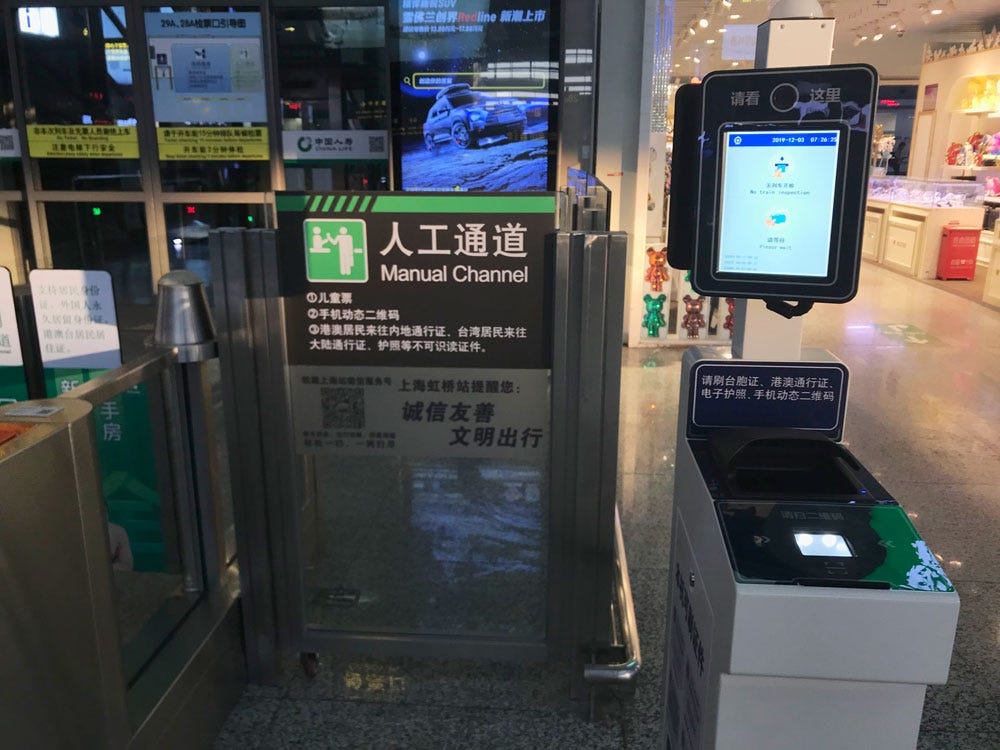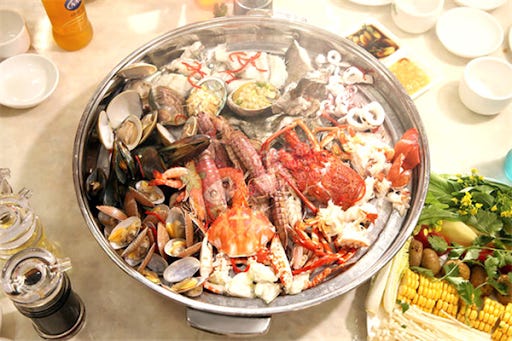China in 2025: What It’s Like on the Ground Right Now
My on-the-ground experience
Just got back to the States from a three-week personal trip to China. I spent most of my time in my hometown of Shanghai, with side trips to Suzhou and Yangzhou—both easily reachable by high-speed rail. As with my last visit, I’m sharing some business trends I observed.
Disclaimer: I did not research any of these businesses. All findings are based on my personal interactions with the products / services or with people (Didi drivers, office employees, etc.). If I am wrong, please correct me so we can learn together.
Chinese economy isn’t great
China’s economy is struggling. Unemployment is high. At dinner, an elementary school classmate told me that many of her college-educated friends have lost their jobs and are finding it difficult to get rehired.
Unlike in the U.S., where a recession is more visibly felt, the economic downturn in China is less obvious. Visit a mall or scroll through social media, and you’ll still see signs of active consumption.
Part of the confusion stems from the sheer size of the population. Even if a smaller percentage of people are spending, the absolute number of consumers remains large—so stores and restaurants can still appear busy, even when the broader economy is weak.
Retirees, who receive solid pension checks from the government, are helping offset the consumption shortfall. They continue to eat out, travel, and shop—especially at value-oriented locations—propping things up a bit.
Wealthy consumers are also still spending as usual. High-end brands and services are thriving. It’s a theme that will come up again later—and it reflects a broader global trend.
Chinese real estate faces headwind
China’s real estate market seems to be running into serious long-term issues. It’s a simple supply-and-demand problem. You’ve probably heard that people around the world are having fewer kids—that’s especially true in Asia.
I caught up with my Shanghaiese MBA classmate. She told me how Ho Chi Minh City—Vietnam’s largest metro and a rapidly rising city—is going through such trend: daily life is affordable (probably absurdly cheap eats), but real estate prices are sky-high. When housing costs are that disconnected from income, people just don’t want to have kids. Japan gets all the headlines for this, but many Asian metro areas are not far behind.
My cousin works in education, and we reminisced about how packed schools during our times used to be. I told her I had 70 classmates per class, with nine classes per grade. (In China, teachers rotate rooms while students stay put—very different from the U.S., where you go to Room 33 for geometry with Mr. Moore and Room 12 for world history with Ms. Lawson.) She said her daughter’s third grade has just three classes with 40 students each—and the lower grades have even fewer.
Kindergartens are struggling to keep staff busy because there simply aren’t enough kids. Instead of cutting back, some are launching toddler programs just to keep the lights on. It’s just one data point, but it signals a broader demographic shift—and that’s a major hit to future housing demand.
Then there’s unemployment. Many people aren’t earning money. And in cities like Shanghai, where migrant workers make up a big part of the population, many are returning to their hometowns—pulling even more demand out of an already oversupplied market.
During lunch at major malls, I got into the habit of casually chatting with office workers, including folks from large real estate agencies. Everyone said the same thing: Shanghai real estate has dropped in value over the past two years, and they don’t expect a bounce-back anytime soon.
If you’re not tied to a job or long-term plan in the city, why buy? And when people start believing prices will keep falling, the motivation to take on a mortgage disappears. Why go into debt for something that might keep losing value?
To make matters worse, developers are still adding supply. Projects—especially on the city’s outskirts—are being completed even though demand isn’t there. So now we have too much supply, not enough demand, and a major shift in how people think about owning property.
That’s a tough combination. And it’s especially rough for Chinese consumers, since much of the "feel rich" mindset has historically come from watching their home values rise. That’s no longer happening.
That said, agents report no slowdown in demand for developments priced above RMB 25,000,000—insane even by Shanghai standards—suggesting the luxury real estate market remains unaffected by demographic or economic headwinds.
Chinese’s EVs are dominating the world
One area where China is clearly thriving on the global stage is electric vehicles. Chinese EV makers see the shift from internal combustion engines to electric as a once-in-a-generation opportunity to become the world’s leading car manufacturing hub. They’re making serious progress—especially in product development and autonomous driving capabilities (L2 and L3, though I honestly can’t tell you the difference).
If I lived in China, I wouldn’t see the need to pay more for a Tesla when I could get a BYD or Xiaomi—both perfectly functional and arguably better supported locally.
You’ve probably heard of BYD—it’s building a manufacturing complex bigger than San Francisco (okay, fine, SF isn’t a particularly large U.S. city). Chinese EVs are gaining traction in Europe and Oceania—not just among consumers but also in public bus fleets. And then there’s the battery supply chain: Robin Zeng of CATL is a billionaire working to solve that puzzle.
Events like the Shanghai Auto Show have become major international attractions, drawing auto fans, analysts, and investors from around the world. You really get a sense there of how far ahead China is when it comes to EVs.
Unfortunately, the infrastructure hasn’t kept up. Traffic is still a mess. In central Shanghai, you’re almost guaranteed to hit a traffic jam coming off the highway. In many neighborhoods, cars are parked on sidewalks or in any available space, leaving pedestrians with no place to walk. That’s the price of prosperity.
Incentives are driving innovation in China
I’ve taken Japan’s Shinkansen plenty of times, and I’ve ridden high-speed rail in China before—but I’m still amazed every time by how fast the infrastructure is expanding. High-speed rail is reaching smaller cities at an unbelievable pace. That’s one benefit of centralized planning: decisions get made at the top, and things just get built.
Yes, part of the goal is to boost domestic consumption and prop up the economy. But these rail lines really do help put rural communities on the map. I hear stories of people bringing handmade crafts or regional foods into big urban markets for the first time. Transportation infrastructure helps pull rural towns out of poverty and into relevance.
Western companies are also building supply chains locally—partly because China is simply cheaper to do business in. Labor is more affordable, regulation is looser (for better or worse), and raw materials are cheaper and more accessible. Same goes for AI. Without strict data privacy or rights, countries like China can develop all kinds of applications. For better or worse—what enables public safety can just as easily power mass surveillance. :)
After recent tariff tensions, I sensed a lot more national pride among Chinese citizens. Growing up in China, I never thought of the culture as especially nationalistic—I certainly wasn’t.

Even if people complain (as they do everywhere), many genuinely feel life has improved. Older folks have solid pensions. Startups have no trouble raising money (not always a good thing). And while not everyone is getting rich, the likes of Jack Ma, Pony Ma, Richard Liu, and Lei Jun have built net worths on par with their Western counterparts.
With ample funding and a clear path to wealth, Chinese entrepreneurs are fired up to innovate—and to reduce dependence on foreign tech. BYD is developing its own chips. Huawei is working to improve its semiconductor design and manufacturing. China leads the world in battery technology for EVs and dominates key raw materials like rare earths. And let’s not forget drones—China owns something like 75% of the global market.
These are just facts, not projections. Whether the West likes it or not, this shift is already happening. And this might just be the tip of the iceberg - who knows what the Chinese are doing in fields such as biotech.
Healthcare: Single payor or for-profit?
China’s healthcare system is starting to take on more of a private-sector flavor.
The U.S. system, of course, is a global disgrace—no argument there. But while it’s tempting to romanticize universal healthcare models elsewhere, the grass isn’t always greener. It’s just patchy and bureaucratic in different ways.
My college friend Jeff moved to Canada. Yes, healthcare is technically “free” there—but he told me you’d better be prepared to wait, even for urgent issues. It’s a trade-off: lower bills, but long lines.
Meanwhile, my cousin in Shanghai cracked a tooth and needed a root canal right away. She has insurance, like most people in China, but the public system couldn’t schedule her quickly enough. The pain was unbearable, so she went to a private clinic and paid out of pocket. At that point, how different is that from going out-of-network in the U.S.?
Anecdotally, I hear doctors in China sometimes overprescribe to hit billing targets set by public hospital administrators. It’s not unusual for procedures to be recommended more for revenue than for health. So whether it’s Western capitalism or Eastern overcapacity, every system seems to be solving the same problem—just with a different kind of mess.
Given Chinese consumers’ willingness to pay for speed and convenience, the country now has a burgeoning private healthcare system.
Honestly, I don’t know what the optimal healthcare system looks like—one that truly balances innovation, cost, and quality of care.
Update on Chinese technology / consumer internet
Traveling in China used to be a hassle without a Chinese bank-issued credit card or phone number.
This time around, my experience was significantly better—thanks to WeChat Pay and Alipay finally accepting foreign credit cards. Total game changer. With a local SIM card picked up at the airport, I lived like a local.
That said, digital payments still aren’t flawless. One WeChat Pay transaction failed while I was trying to book a hotel—mild panic ensued—but thankfully, I had Alipay set up as backup. Shoutout to Jack Ma.
Last trip, I had to get my passport manually checked at train stations while Chinese citizens zipped through with ID scans. Now, many stations have passport-scanning machines. They didn’t all work perfectly, but the fact that they exist already feels like real progress.
Meituan has moved beyond aggressive growth mode and is now flexing pricing power: menu prices on Meituan are often higher than in person, and fees are creeping up—classic post-dominance behavior, just like Uber or DoorDash in the U.S. Meituan is also expanding into last-mile delivery of electronics, medicine, and more. Same playbook.

On the drinks front, Chagee recently went public in the U.S., following Mixue’s IPO in Hong Kong. I’m partial to Chagee—higher quality, more premium positioning, and a brand that feels slightly more ESG-conscious. The founder is only thirty and didn’t attend college, but clearly understands what makes a good product: real tea, real milk, and strong aesthetics. They’ve already got 6,500 stores in China. Can they get to 20,000+? We’ll see.
Mixue, by contrast, is a pure volume game. Dirt-cheap, sugar-loaded drinks for students. It works—but at what cost? You can’t help but wonder about the long-term health impact. Is Ozempic hot in China yet?
Speaking of health, Chinese consumers are all over the boom in wellness products that don’t actually treat anything. Think supplements and gadgets that promise vague benefits. Chinese medicine–inspired supplements are especially popular. People want easy fixes, and there’s no shortage of businesses ready to sell them.
Consumer fads turn over fast. Last time I visited, camping was in—Chinese-style camping: setting up a tent in a city park, not a wilderness trek. That’s already fading. Now, steamed seafood restaurants seem to be the new hype, judging by their near-perfect ratings on Chinese Yelp equivalents. Will it last? Maybe. Restaurants are big business in China, but it’s hard to build a durable moat. A lot of spots I liked two years ago are already gone.
Fashion, in my view, remains a wide-open opportunity—and a glaring weakness. High-end malls are filled with Western brands selling overpriced basics (think $60 North Face tees you’d find for half the price at U.S. outlets). Local brands don’t really measure up—they’re often poorly designed and badly fitting. I’m waiting for a Europe-trained entrepreneur to crack this: someone who understands both design and fit for Chinese consumers. That person will be a billionaire—and do the country a favor, aesthetically.
And then there’s Pop Mart. I first saw it in Hong Kong, but it’s exploded in mainland China. Collectible toys are a one-and-done revenue model, but if you hit product-market fit, it’s a goldmine. Even if the toys fade, the IP—movies, games, theme parks—has serious legs. The founder? Another young billionaire under 40.
I didn’t know they even have stores in the U.S., I went to the one in the Bay Area and I see why they are popping (pun intended) - high quality product, tons of trend surfing with collaboration with media brands such as Hollywood films, anime, video games, etc. Very similar business model to a name like Funko (below).
Let me know what you think. Thanks for reading. I will talk to you next time.
If you want to advertise on my newsletter, contact me 👇
Resources for your public equity job search
Check out my other published articles and resources:
📇 Connect with me: Instagram | Twitter | YouTube | LinkedIn
If you enjoyed this article, please share it with your friends/colleagues. Sharing is what helps us grow! Thank you.










Regarding the real estate glut in China. I am wondering why doesn’t the government buy the properties that don’t get sold and give them for free to couples with at least three children? Wouldn’t that create a good incentive to stop the rapid demographic decline?
I found the traffic in Shanghai surprisingly light.